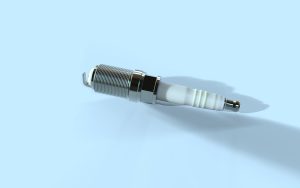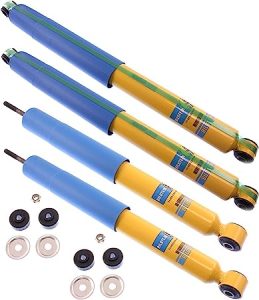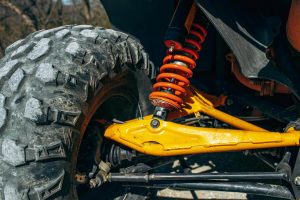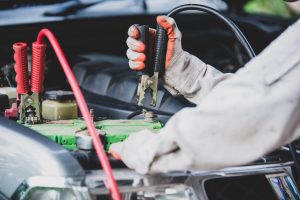It’s common to experience car troubles when driving, and one of the most unpleasant car problems is when your car shuts off when stopped or slowing down and unexpectedly loses power while on the road can be an incredibly stressful situation that no car owner wants to find themselves in.
Thankfully, understanding why this happens and how to fix it can help alleviate some of that stress. In this blog post, we’ll explore what exactly causes a car shuts off when stopped or slowing down and how you can take preventative measures against it in the future. Keep reading for more!
Table of Contents
ToggleWhat Causes A Car To Shut Off When Stopped or Slowing Down?
There’s no shortage of potential causes for a car suddenly stalling when stopping or decelerating. Faulty spark plugs, clogged fuel filters,fuel pump and inadequate oil levels could all be the culprits – in addition to problems related to the fuel pump and air filter. To ensure your vehicle operates optimally, keep an eye out for these common issues! Let’s take a look at some of these potential causes and how to fix them respectively in more detail.
Fuel Pump
A fuel pump is essentially the heart of your car. And it can be main cause of Car Shuts off When Stopped or Slowing Down. It pulls gasoline from the gas tank and sends it to the engine, where it is burned for fuel. Without a functioning fuel pump, your car simply won’t start or will shut off when stopped or slowed down. The most common cause of fuel pump failure is due to wear and tear over time, but there are other potential causes, such as clogged fuel lines, dirty filters, electrical problems, or even lousy gas.
How Do You Know if Your Fuel Pump Is Failing?
There are several signs that could indicate your fuel pump is failing, such as difficulty starting the engine; sputtering or jerking while driving; loss of power; loud noises coming from the engine when accelerating; and stalling when stopping or slowing down. If any of these symptoms sound familiar, then there’s a good chance that your vehicle may need a new fuel pump.
How to Fix Fuel Pump Issues?
Now that we know what some of these common issues are, how do we fix them? Luckily, most of these problems are easy fixes that you can do yourself without having to take your car in for expensive repairs! For electrical problems, check all wiring connections between your battery and your fuel pump as well as any fuses related to it; if these connections are loose or broken, simply reconnect them or replace any blown fuses as needed.
For clogged filters, try cleaning out any debris or dirt build-up with compressed air; if this doesn’t work, then you may need to replace it entirely with a new one! Finally, for worn-out pumps, simply purchase a new one either online or at your local auto shop; make sure you get one specifically designed for your make/model of car, as not all pumps are interchangeable!
Faulty Alternator
If your car has been shutting off when you stop or slow down, it may be due to a faulty alternator. An alternator is what charges the battery in your car, and if it’s not working correctly, the battery will eventually run out of power. This can cause your car to stall or shut off completely. Luckily, there are a few things you can do to fix this problem.
Signs of a Failing Alternator
There are several signs that can indicate that your alternator is on the fritz. If you notice any of the following, it’s time to bring your car in for a tune-up:
-Your car won’t start. This is usually the first sign that something is wrong with your alternator. If your battery is charged, but your car won’t start, it could be due to a faulty alternator.
-Your headlights are dimming. If you notice that your headlights are dimming or flickering, it’s another sign that your alternator isn’t working correctly.
-Your car is making strange noises. A grinding or whining noise coming from under the hood could also be indicative of an alternator problem.
-You see smoke coming from under the hood. If you see smoke coming from your engine compartment, it’s definitely time to take your car in for service, as this could be indicative of a more severe problem.
-Your battery light is on. Most cars have a warning light that comes on when there’s a problem with the charging system. If this light is on, it means there’s an issue with your alternator that needs to be addressed.
What to Do if You Think You Have an Alternator Problem
If you notice any of the above signs, it’s crucial to take action right away and bring your car in for service. Ignoring the problem will only make it worse and could eventually lead to complete engine failure. A qualified mechanic will be able to diagnose the problem and make the necessary repairs. In most cases, simply replacing the alternator will do the trick. However, if the problem is more serious, additional repairs may be necessary.

Defective ignition coils
Ignition coils are part of your car’s ignition system. They’re used to convert the low voltage from your battery into the high voltage needed to spark your plugs and start your engine. Over time, however, they can wear out and become defective. When this transpires, your car can unexpectedly shut off when you bring it to a halt or slow down as the spark needed for proper engine operation cannot be supplied.
How do I know if I have defective ignition coils?
There are a few symptoms that can indicate that you have defective ignition coils. These include:
- Your car is having difficulty starting
- Your engine is misfiring
- You’re experiencing reduced fuel economy
- Your check engine light is on
- If you’re experiencing any of these symptoms, it’s essential to have your car checked out by a mechanic as soon as possible, as they can get worse over time and lead to more severe problems.
How do I fix defective ignition coils?
Although it may sound intimidating, repairing faulty ignition coils is more straightforward than you think. The most sensible answer is to replace them with brand new ones – something that can be accomplished by yourself if you’re mechanically savvy or entrusted to a mechanic for those who are not. It won’t break the bank and will guarantee your car does not unexpectedly stall out on you in future!
Clogged fuel filter
A clogged fuel filter is one of the most common issues that can cause a Car Shuts off When Stopped or Slowing Down. The fuel filter is responsible for keeping dirt, debris, and other contaminants out of the fuel system; if it becomes clogged with debris, it will prevent the necessary amount of fuel from reaching the engine. This lack of fuel can cause the engine to stall out when stopping or slowing down.
Signs That You Have a Clogged Fuel Filter
If your car is sputtering out while coming to a stop or slowing down, the likely culprit could be a blocked fuel filter. Other signs of this issue can include difficulty starting the engine after refueling and weak acceleration when attempting to speed up quickly. Should you experience any of these warning signals, make an appointment with your mechanic promptely for further inspection!
How To Fix It?
If you think your car has a clogged fuel filter, then it’s essential to take care of the problem right away, as leaving it unattended could lead to further damage in the long run. The first step is to inspect the fuel filter itself; if there are signs of dirt and debris present in the filter housing unit, then it should be replaced immediately.
Most auto parts stores sell replacement filters, so they should be easy enough to find and install on your own if need be. However, if you want more peace of mind, then seeking professional help may be best—especially if you don’t feel confident in replacing something as crucial as this yourself!
Low Oil Pressure
Oil pressure is an integral part of keeping your car running smoothly. It helps lubricate the moving parts inside the engine that make it run, including the pistons and valves, as well as other systems such as the camshafts and crankshaft. Without adequate oil pressure, these parts can start to wear down quickly, leading to costly repairs or even engine failure.
How Low Oil Pressure Happens
There are several reasons why your vehicle may have low oil pressure. First, it could be due to a lack of oil in the system – either because you’ve recently changed your oil and haven’t filled it back up to its proper level or because there is a leak somewhere that is draining out all of your oil before it has a chance to reach its destination.
Another common cause of low oil pressure is worn-out seals or gaskets that allow too much oil to escape from the system before it reaches its destination. Finally, if you have an older vehicle with high mileage, then the wear-and-tear on the internal components of your engine may be causing them to become less efficient at building up enough pressure for proper operation.

Fixing Low Oil Pressure
The first step in fixing low oil pressure is determining what exactly is causing it – so if you suspect that you have low oil pressure, take your car to a qualified mechanic who can diagnose the issue and give you recommendations on how best to proceed with repairs. If they determine that there is indeed an issue with your seals or gaskets, then they will likely recommend replacing them altogether.
However, if they find that your problem is simply due to insufficient levels of fluid in the system, then topping off the reservoir should do the trick! Finally, if they determine that wear-and-tear on internal components is causing issues with building up enough pressure for proper operation, then they will likely recommend replacing those pieces altogether as well.
Also Read: Car Jerking When Slowing Down
Malfunctioning throttle body
The throttle body is responsible for controlling the amount of air that enters the engine’s combustion chamber. This helps regulate engine speed and power output. It is located between the air filter and intake manifold on most vehicles and has two hoses attached – one that connects to the gas pedal and one that connects to the electronic control unit (ECU). The ECU sends signals to the throttle body depending on how much pressure is applied to the gas pedal.
These signals tell it how much air needs to enter into the intake manifold in order for your vehicle’s engine performance to stay consistent.
What Causes Throttle Body Malfunction?
A common cause of a faulty throttle body is the build-up of dirt, dust, or other debris inside of it. This build-up can prevent air from entering correctly into the intake manifold, which will cause your vehicle’s engine performance to suffer.
Additionally, if there are any cracks or breaks in any of its components, such as hoses, O-rings, or seals, then this will also lead to improper airflow into your engine’s cylinders, leading them not getting enough fuel/air mixture which could lead to your car shuts off when stopped or slowing down or coming to a complete stop.
How Do You Fix It?
If you suspect that your throttle body may be malfunctioning due to dirt build-up or breakage in its parts, then it would be best practice for you to have it checked out at an auto repair shop as soon as possible so they can diagnose and fix the issue before any further damage occurs due to lack of airflow into your engine’s cylinders.
The repair shop should clean out any dirt build-up inside of it as well as replace any cracked/broken components so that everything works correctly again without having issues with stalling or shutting off unexpectedly when coming close stops/slowing down speeds on highways/roadsides etc.
Starter motor failure
Without the starter motor, your car would be unable to start. This crucial electrical component consists of three main parts: a drive gear and an electric motor powered by solenoid that allows your engine to ignite when needed. The solenoid acts as a switch that triggers the electric motor when you turn the key in the ignition switch, while the drive gear engages with teeth found on the flywheel so that power can be transferred from the spinning flywheel to the crankshaft.
What Causes Starter Motor Failure?
Starter motor failure has a single culprit – the starter motor relay. This device facilitates electric current between the battery and starter, so when it’s faulty, this crucial energy flow is disrupted which often leads to your vehicle stalling at traffic lights or on highways. Needless to say, this can be an incredibly dangerous situation if you’re driving in busy areas!
Diagnosing Starter Motor Failure
If you suspect that your car is shutting off due to starter motor failure, it’s crucial that you have it checked out by an experienced mechanic as soon as possible. They will be able to diagnose whether or not it is indeed a faulty starter motor relay and advise you on how best to proceed with repairs.
Fixing Starter Motor Failure
If your car does have a faulty starter motor relay, then the only way to fix it is by replacing the entire unit. Fortunately, this isn’t overly expensive and shouldn’t take too long for an experienced mechanic to complete. While replacing the starter motor may be intimidating for someone who isn’t used to working on cars, it’s actually relatively straightforward as long as all safety precautions are taken into account and proper tools are used.

Failed relay switch
Relay switches are practical components of electrical circuits that enable current to either flow or be discontinued. These types of switches are necessary for a wide range of uses, such as automobile engines.
In an engine, there are multiple relay switches that control the flow of electricity to various components. One of these components is the fuel pump, which supplies gasoline to the engine.
When a relay switch fails, it can cause the engine to shut off because the flow of electricity to the fuel pump is interrupted. As a result, the engine will run out of gasoline and stall.
In some cases, a failed relay switch can also cause the engine to turn over but not start. If this happens, it’s usually because the starter motor is not receiving enough power to turn the engine over.
How to Replace a Failed Relay Switch?
If you believe a broken relay switch is the reason your car keeps turning off when stopping or decelerating, get it replaced right away. The good news is that swapping out a faulty relay switch requires just some simple tools and can be done quickly. Here are the necessities:
- A brand new relay switch (head to your local auto parts store for one)
- A Phillips head screwdriver
- A flat-head screwdriver
- Needle nose pliers
- Wire cutters
- Electrical tape
Steps To replace the failed relay switch:
1) Locate the failed relay switch. It will be mounted on one of the fuses in the fuse box under the hood of your car.
2) Using needle nose pliers, remove the fuse from the fuse box and set it aside in a safe place.
3) Using a Phillips head screwdriver, remove the screws that hold the failed relay switch in place. There may be one or two screws depending on the make and model of your car.
4) Pull out the failed relay switch and unplug any wires that are connected to it.
5) Trim any wires that do not reach the new relay switch using wire cutters; then, apply electrical tape to extend them long enough. Ensure there is slack in the wires for easier connection with the new relay switch.
6) Join all of the wires to their corresponding spots on the new relay switch and firmly plug it into place.
7) Use screws to secure your newly installed relay switch in position – this will guarantee no risk of disconnection while driving!
8) Reinsert the fuse into its slot in the fuse box and turn on your car’s ignition to test whether or not the new relay switch is working correctly.
9) If your car doesn’t start, turn off the ignition and check all of your connections to make sure they’re tight before trying again.
10) If your car starts without any issues, then you’ve successfully replaced the failed
Faulty Spark Plugs
Faulty spark plugs are often due to a lack of maintenance and frequently occur in cars with high mileage. They may also be caused by issues like worn piston rings or valves, improper compression, and carbon deposits in the combustion chamber.
The latter is more common as engines age because the spark plug tip becomes less effective at igniting the fuel-air mixture in the engine cylinder. As a result of this, you may experience decreased power, increased fuel consumption, reduced acceleration, misfiring during acceleration or idling speeds, or difficulty starting your car.
Signs of Trouble
It is essential to know the signs of faulty spark plugs so you can take action immediately if needed:
1) Your car will have difficulty starting;
2) You will experience engine hesitation;
3) You will experience reduced power;
4) You will experience increased fuel consumption;
5) You will hear strange noises from the engine;
6) You will feel vibrations coming from the engine;
7) Your car may produce visible exhaust smoke;
8) Your check engine light may come on.
How to Fix Faulty Spark Plugs?
If you suspect that your spark plugs are causing your vehicle’s problems, then it’s time for a fix! Here’s what you need to do:
1) Inspect your spark plug cables – Look for signs of damage, such as frayed wires or loose connections;
2) Check for corrosion on the spark plug itself – If there is corrosion present, then your spark plug needs replacing;
3) Test your ignition coil – This should be done by a professional mechanic as they have access to specialized equipment necessary for testing these components accurately;
4) Replace all faulty parts – If any parts are found to be faulty, then they should be replaced as soon as possible with brand-new parts sourced from a reputable manufacturer.

Exhaust system problems
The exhaust system is an integral part of your car’s overall performance. It can also cause of Car Shuts off When Stopped or Slowing Down. It helps reduce noise and directs harmful gases away from the engine and out of the passenger compartment. The components of an exhaust system include the manifold, catalytic converter, resonator, muffler, flex pipe, tailpipes, and more. They work together to keep your car operating efficiently by allowing air to escape from the engine while also reducing toxic emissions.
Common Problems That Can Occur Within Your Exhaust System
If any one of these components fails or becomes damaged in some way, it could cause a variety of issues, such as decreased fuel efficiency, increased noise levels, poor acceleration/deceleration performance (including stalling), engine misfires/stuttering, etc. Additionally, if there is a leak in the exhaust system (or any other part of your car’s engine), it can cause air to enter the combustion chamber resulting in a lean fuel mixture that will cause the engine to shut off when you stop or slow down.
How To Diagnose & Fix These Problems
In order to properly diagnose what is causing your car to shut off when stopped or slowed down—whether it’s an issue with your exhaust system or not—it’s best to take it to a professional mechanic who has access to diagnostic tools that can pinpoint precisely what’s wrong with your vehicle’s engine/exhaust system. Once they have identified what needs repair, they will be able to tell you exactly how much it will cost and how long it should take so that you can get back on the road safely and quickly!
Alos Read: TEMPORARY FIX FOR STUCK BRAKE CALIPER
Frequently Asked Questions
What to Do If the Car Cut Off While Stopped at a Light?
If your car cuts off while stopped at a light, then it’s likely due to an issue with the fuel system or an exhaust system problem. Immediately recognize the signs and pull over to call for a tow truck or have it examined by an expert who can accurately identify the cause of this problem.
Is it dangerous if my car shuts off when stopped or slowed down?
Without a doubt, having your car shut off when stopped or driving slowly can be hazardous; especially on highways and busy roads. This could easily cause an accident so it’s critical to visit a mechanic as soon as you can for check-up!
Will it be expensive to fix?
It depends on what the issue is and how severe it is. If it’s a minor problem, then typically, the repairs won’t be too expensive. However, if it’s more serious, then you could be looking at a hefty repair bill. It’s always best to speak to your mechanic beforehand, so you know exactly how much you’re looking at spending.
How can I prevent it from happening again?
The best way to prevent a car shuts off when stopped or slowed down is by getting regular car checkups and maintenance. Make sure you get your car serviced at least once a year or more often if you drive it a lot. Additionally, keep an eye on the warning lights on your dashboard—if one comes on, then take your car to the mechanic straight away to get it looked at. Finally, make sure you buy car parts from a reputable manufacturer and have them installed by a qualified technician.
Conclusion
If your car shuts off when stopped or slowing down, then it’s likely due to an issue with the fuel system, exhaust system, or some other part of the car’s engine. The best way to diagnose the issue and get it fixed is by taking your car to a professional mechanic who has access to diagnostic tools and can identify what needs repairs. Additionally, be sure to stay on top of regular car checkups and preventative maintenance so that you can avoid any significant car issues in the future!
Now that you know why your car shuts off when stopped or slowed down as well as how to go about getting it fixed, we hope you feel better prepared for solving this issue if it arises again in the future!







